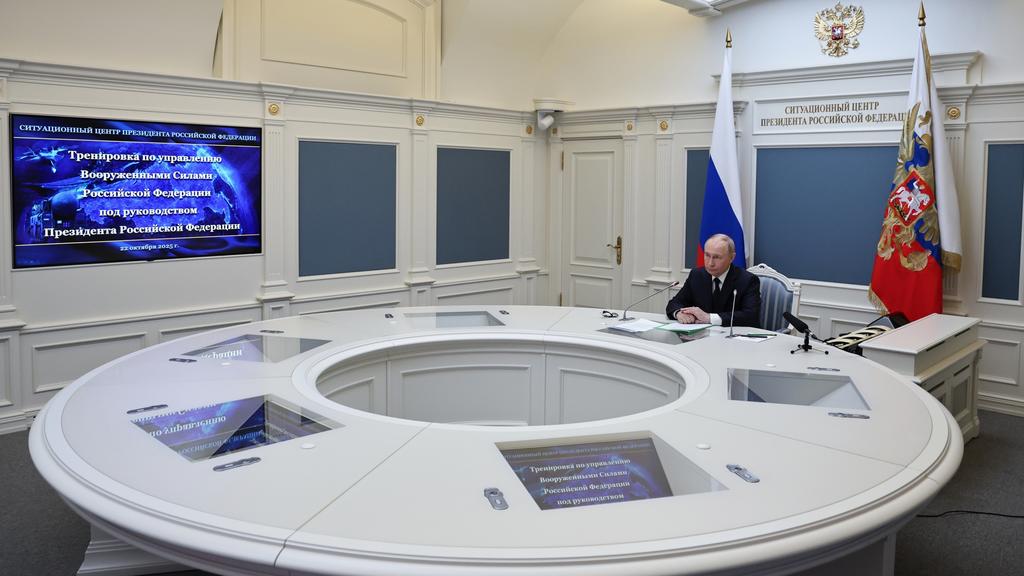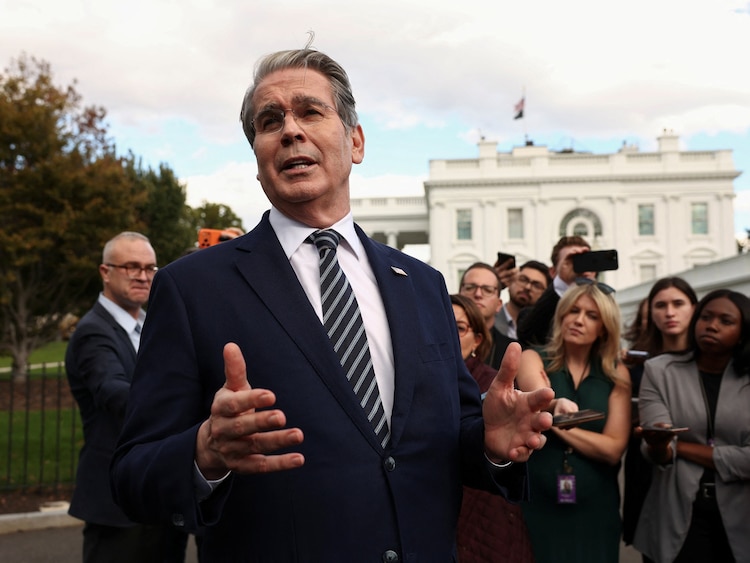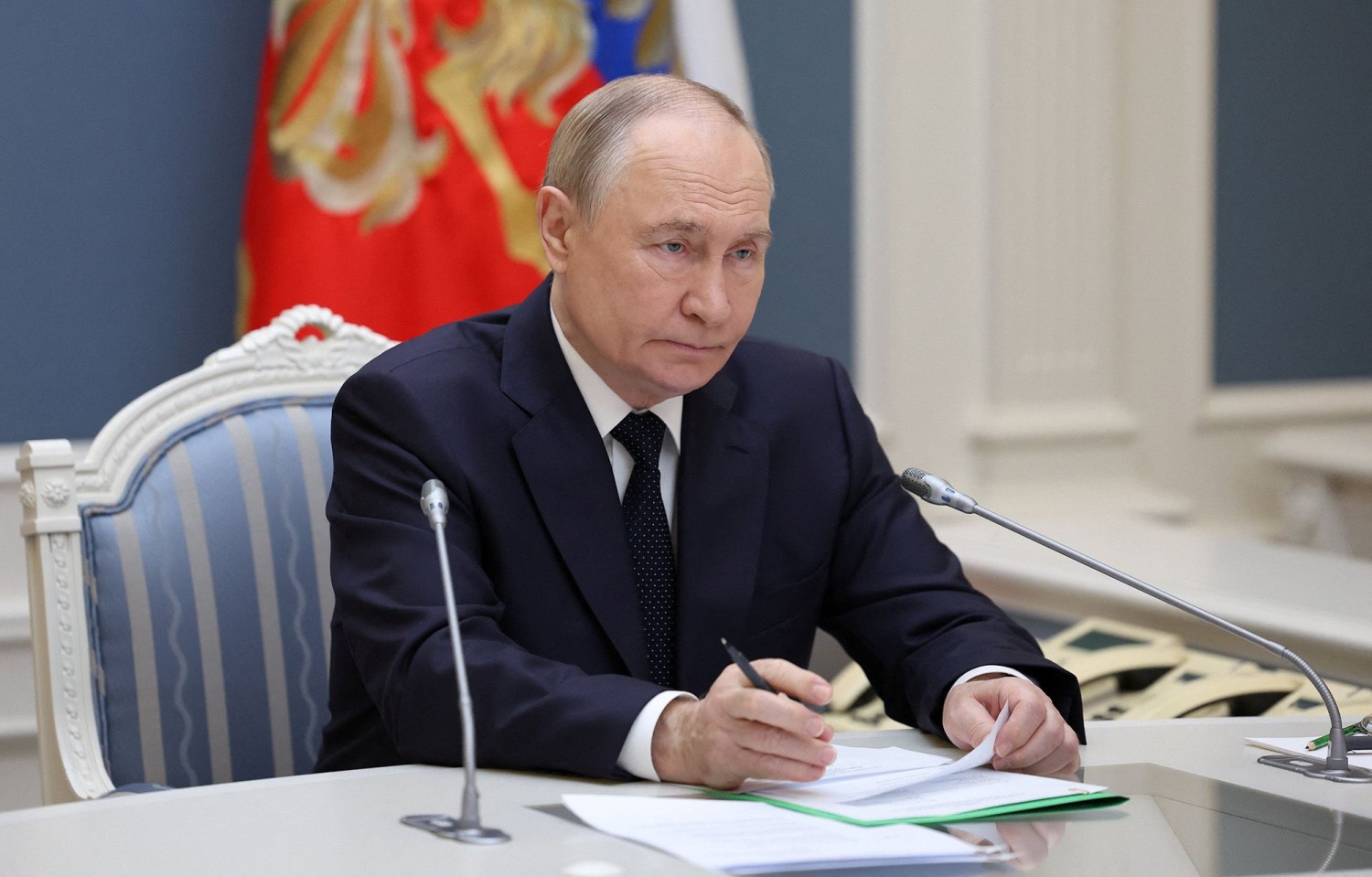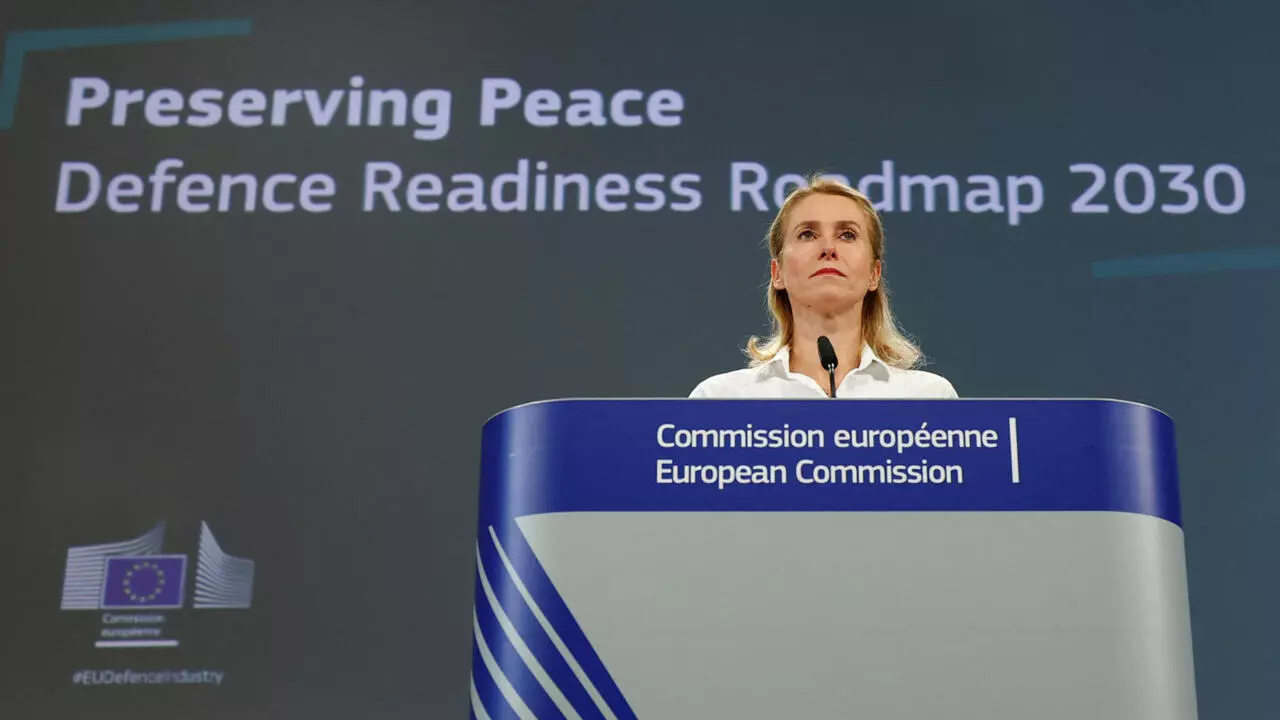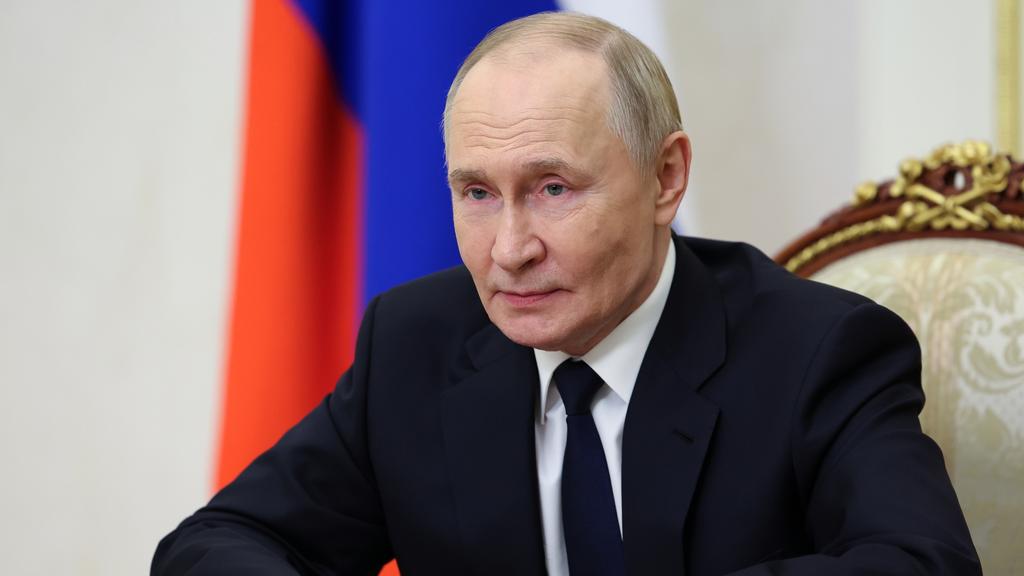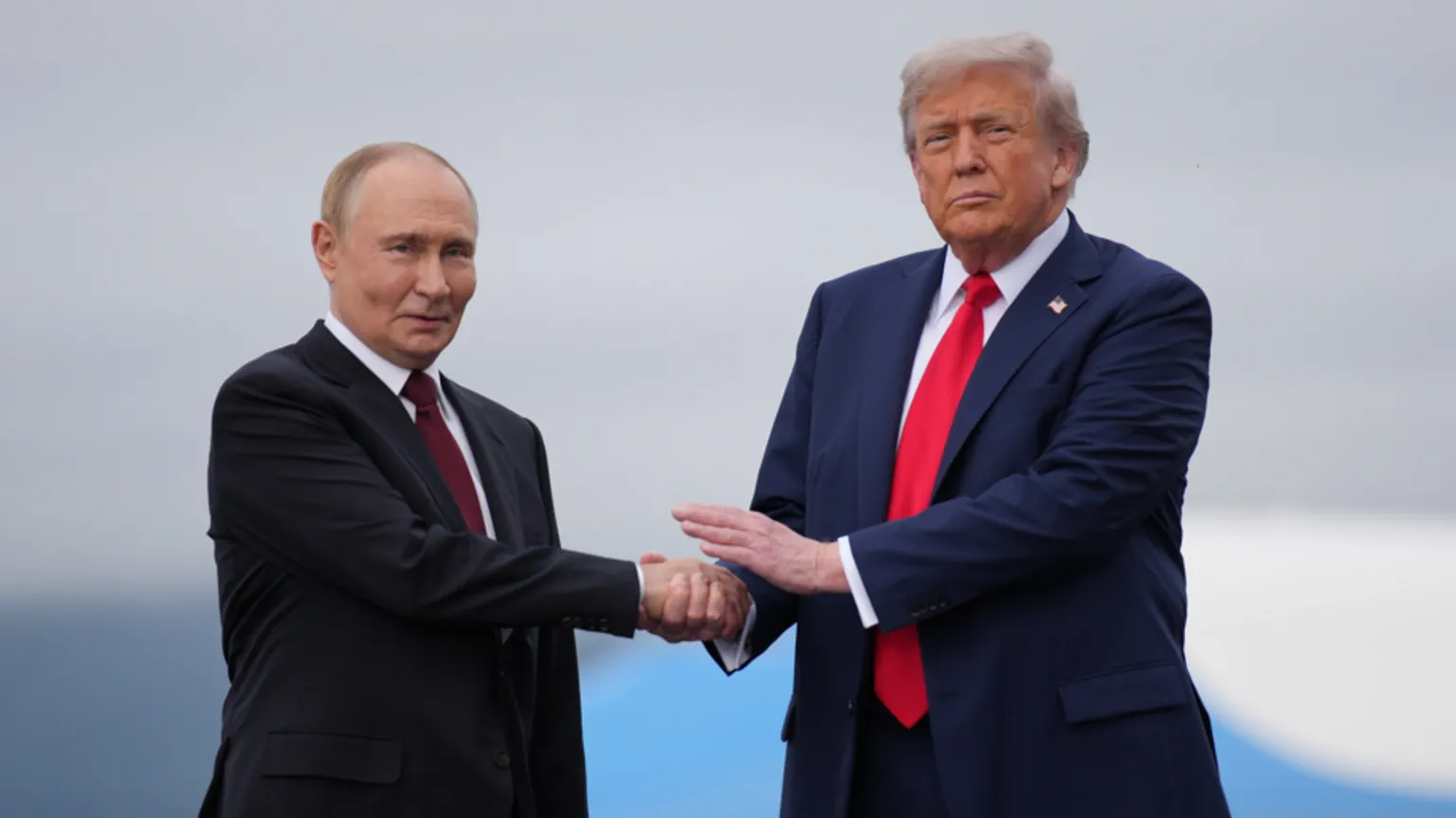
‘AXIS OF UPHEAVAL’: Four powerful nations in shadowy ‘alliance’
Russia may have choked in Ukraine. China may have overreached with Iran. But a new report warns the Axis of authoritarians is only getting stronger.
Russia may have choked in Ukraine. China may have overreached with Iran. But a new report warns the axis of authoritarians is only getting stronger, and more determined to topple the world order.
“A new Axis of Upheaval — the increasing alignment among China, Russia, Iran, and North Korea — is fundamentally altering the geopolitical landscape,” argues the Washington DC-based Centre for a New American Security (CNAS).
“Bound by shared opposition to a US-led global order, the four powers are growing in strength and coordination and bent on upheaval.”
Russia and China began a new round of joint naval drills in the Sea of Japan yesterday. It’s a move designed to reinforce their “friends-without-limits” strategic partnership.
Never miss the latest wealth and culture news from Australia and around the world — download the news.com.au app direct to your phone.

Notably, this deal was sealed days before Russia launched its full-scale invasion of Ukraine. Now, CNAS senior fellow Adrea Kendall-Taylor and researcher Nicholas Lokker argue their collaboration has deepened significantly. And Pyongyang and Tehran are tagging along.
“The axis of upheaval envisions a world ordered far differently from the one in which we live today,” says Richard Fontaine, chief executive officer of CNAS.
“The United States must develop a comprehensive response that will safeguard its interests, values, and international arrangements.”
But those same “interests, values and international arrangements” are under stress from within.
US President Donald Trump is taking a blowtorch to international trade agreements, friendly alliances and global institutions established through the United Nations after World War II.
At the same time, China is strengthening its own international power bloc.
“The Shanghai Cooperation Organisation (SCO) has become a prototype for China and Russia to institutionalise their coordination on geopolitical affairs,” Mercator Institute for China Studies analyst Claus Soong said.
It was founded in 2001 as a regional security forum, he explains. Now, its purpose is to “legitimise their influence over social and political norms in parts of the world outside the Western-led rules-based order and to promote an alternative order in which global power is shared by multiple states”.
But are the new axis powers truly united?
And are their promises of mutual support real?
Axis of upheaval
It’s not an anti-NATO. But it is an expanding network of like-minded dictators.
“Looking forward, the military challenges that the axis of upheaval poses are likely to grow,” the CNAS report states.
“Axis cooperation will also complicate the picture for US and allied defence planners who can no longer assume that any one of these countries would fight alone, either because one or more of these countries provides military aid and weapons or, less likely, fighters.”

Chairman Xi Jinping and President Vladimir Putin issued a joint SCO statement in May: “Both sides, together with other member states, will continue to enhance the international influence of the Shanghai Cooperation Organisation, promoting its role in building a multipolar world order centred on the United Nations and based on strict adherence to international legal principles.”
It’s a message designed to appeal to leaders uncomfortable with Western rules and standards, and how these are applied.
“The (SCO) organisation has conveyed a worldview emphasising sovereignty and security, and amplifying Chinese and Russian narratives, such as preventing “colour revolutions” or stopping a ‘new Cold War’, as Xi has stated, and ‘shaping a fair multipolar world order’, as Putin has remarked,” Soong explained.
But China clearly has issues with UNCLOS, the UN Convention on the Law of the Sea, despite signing the territorial treaty.
Russia sidestepped the UN Charter with its unilateral military assault on a neighbouring sovereign nation (Ukraine).
Iran’s support for Middle Eastern terrorist organisations — which it insists are religious freedom fighters — has earned it near global pariah status.
And North Korea’s repressive Kim regime has clawed its way through decades of international sanctions to secure for itself a significant nuclear ballistic missile force.
But the SCO is not an alliance, Soong adds; “Nor does it have a common basis of geopolitical interest. China and Russia are aligned but not allied, and they have differing interests in treating Central Asia as their sphere of influence.”
And that, argues Washington DC geopolitical analysts Craig Singleton and Grant Rumley, is the difference between words and actions.
“Herein, of course, lies the rub with Beijing’s much-touted Middle East network and the wider China-Russia-Iran alignment,” they write.
“Both rest on partnerships of convenience united by shared grievance — but all too often divided by capability and caution.

Convergence on Ukraine
“Co-operation among the four countries was expanding before 2022, but Russia’s invasion of Ukraine accelerated their deepening economic, military, and technological ties,” reads the CNAS report, titled The Axis of Upheaval, Gauging the Growing Military Cooperation Among Russia, China, Iran, and North Korea.
North Korea has sent thousands of troops and millions of rounds of ammunition to support Russia’s efforts to eradicate Ukraine. China has been less blatant.
At first, it was deliveries of minor mass-produced components to support Russia’s failing war machine. Then, accusations expanded to the delivery of Chinese-made drone engines in shipping containers marked “industrial refrigeration units”.
Now, Ukrainian President Volodymyr Zelenskyy has accused China of directly providing Russia with weapons.
“Military cooperation within the axis is likely to shorten the time it will take Russia to reconstitute its conventional forces, increasing the pressure on Europe to more rapidly ramp up its own capabilities,” the CNAS report warns.
And Moscow, despite the failure of its advanced weaponry, has plenty to offer in return.
“Russian advancements on the battlefield in Ukraine and experience in modern warfare, for example, are diffusing to each axis country,” the report explains.
But this emerging Axis is offering Moscow more than spare parts.

“As Putin’s Russia faces Western sanctions due to its war on Ukraine, the SCO has also provided a diplomatic platform through summits and ministerial meetings that have allowed both Beijing and Moscow to form a front with Global South countries more aligned with their anti-Western narratives and authoritarian view,” Soong explains.
It’s a trend that’s drawn the ire of the US Ambassador to NATO, Matthew Whitaker.
He has attacked Beijing for using Moscow to wage a “proxy war” to distract the West from Taiwan and the South and East China Seas.
“China thinks they’re fighting a proxy war through Russia,” he told Fox News last week. “They want to keep the US and our allies occupied with this war, so that we cannot focus on our other strategic challenges.”
Iran, the Axis’ weak underbelly
“Importantly, the axis’s limp showing during the (Iran) war was far more than a political embarrassment for Beijing,” argue Rumley and Singleton.
“It is a warning that any hostile move against Taiwan — especially with Trump in the Oval Office — could trigger an unpredictable US response.”
Israel’s virtually unopposed targeted assassination of key Iranian military leaders, scientists and politicians and the US bombing of underground nuclear facilities was a direct confrontation with the new Axis.
It met no resistance.

“As Israeli warheads slammed into Iranian sites, Chinese statements scolded Israel and urged Washington to rein in its ally, but Beijing still withheld drones, credit, and replacement missile parts for its ‘comprehensive strategic’ partner,” they argue.
“The net effect has been to reinforce a perception that China often pontificates more than it meaningfully participates.”
Soong says the air strikes on Iran demonstrate the SCO’s limitations.
“In addition to lacking common values and coherent geopolitical interests, the SCO also has no concrete leverage to take collective action,” he writes. “When Iran was targeted, the organisation had little capacity for action beyond issuing calls for de-escalation and condemning both Israel on June 14 and the United States on June 23 for their military strikes.”
It also demonstrated the West’s capabilities. Again.
“The United States’ sudden intervention in the Iran-Israel conflict could complicate China’s Taiwan calculus,” Rumley and Singleton argue. “In a cross‑strait crisis, a wild-card US president such as Donald Trump might act sooner and hit harder than Chinese planners previously assumed.”
But CNAS argues that Russia’s and China’s limited support for Iran, this time, does not spell the end of their ties. Instead, that cooperation is likely to persist and expand.
“The incentives fuelling their cooperation have not changed since Israel’s actions against Iran,” the report states. “If anything, Russia, China, and North Korea are likely to see value in helping Tehran reconstitute its capacity to antagonise the United States and create policy dilemmas for Washington.”

Axis of spin, or leverage?
“With the dust now settled, the lesson most relevant to Beijing lies far from the Gulf,” argue Rumbley and Singleton. “The short clash confirmed what Chinese strategists have long preached: In great-power contests, hard power decides outcomes.”
The Axis forces of World War II were more about moral support than material.
Nazi Germany did offer support to Fascist Italy, mainly in an effort to secure oil supplies. But Imperial Japan was limited to an exchange of critical minerals and technical breakthroughs.
What of the new Axis of Upheaval?
“There is more divergence among SCO members than alignment, despite its non-Western appearance,” argues Soong. “The call for collectively building a multipolar global order does not transcend the individual geopolitical interests of its members.”
But the Axis is well-positioned for propaganda, he adds.
“Their messaging is clearly reflected in SCO statements and demonstrates a deepening strategic alignment in rhetoric, positioning themselves on the moral high ground in contrast to perceived Western double standards – that the West labels Russia a destabiliser for invading Ukraine, while remaining silent on, or even encouraging, Israel’s attack on Iran. “
But CNAS argues the threat of Axis coordination is real.
“While these countries are reticent to incur unnecessary costs on behalf of their partners, they will seek out opportunities to support one another, especially in ways that help them withstand Western pressure,” the report argues.
“Through their cooperation, these countries are gaining valuable information and learning lessons that may strengthen each country’s military, and their collaboration will likely increase the resilience of their regimes.
“There is also a rising risk of simultaneity, or the prospect that these countries could initiate more than one crisis at the same time, in an explicitly coordinated or opportunistic manner.”
Iran’s cheap, functional drone weapons are now being used by Russia and North Korea.
Moscow’s defence officials are travelling to Pyongyang, Beijing and Tehran to share their combat experience.
“Their cooperation will not end with Russia’s war against Ukraine,” the CNAS report concludes. “Russia’s aims go beyond Ukraine, and Moscow will continue to view cooperation with China, Iran, and North Korea as essential to accomplishing these aims.”
